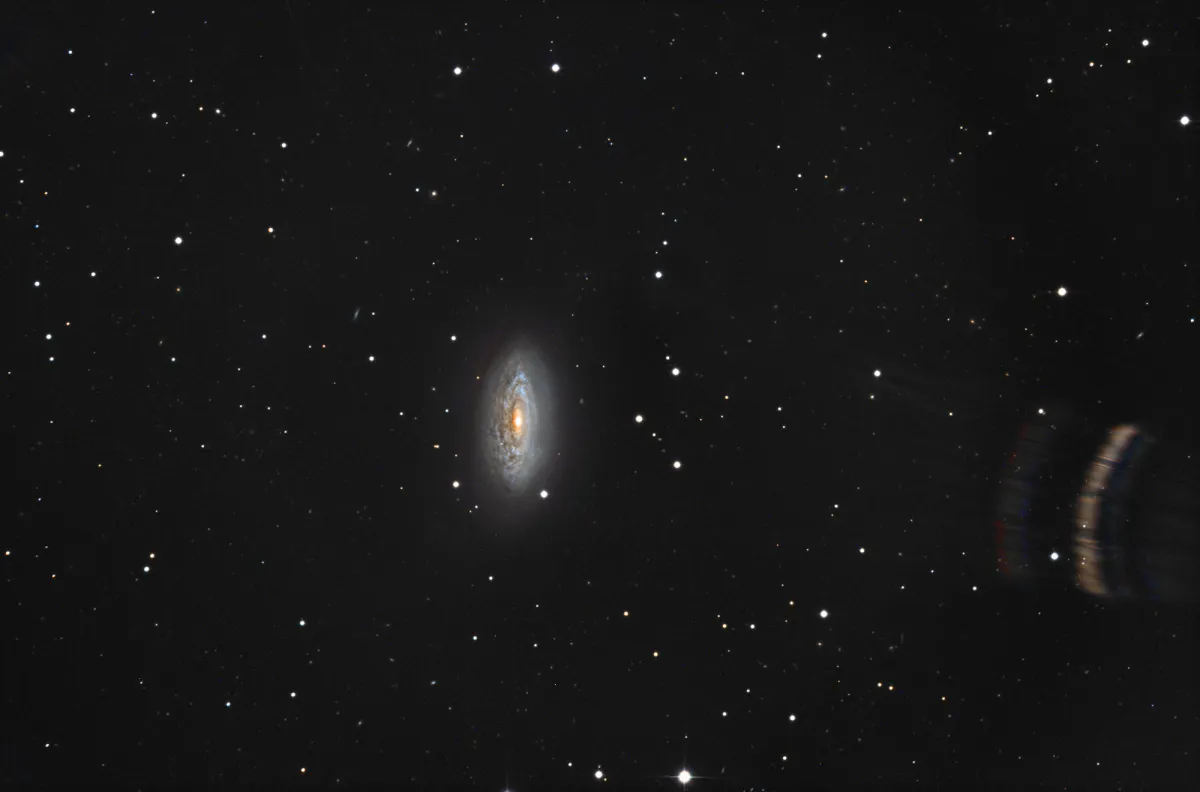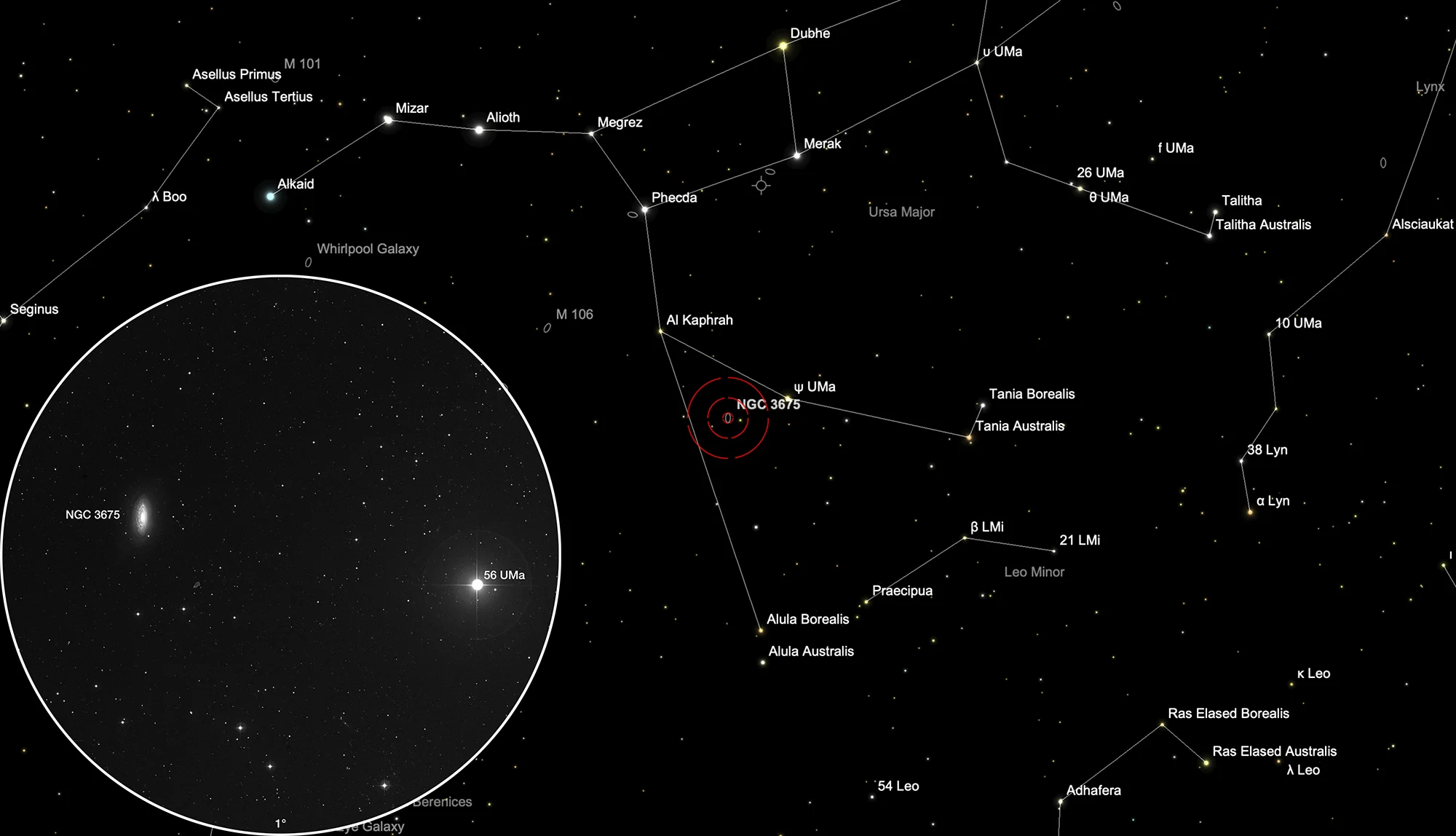Galaxie NGC 3675

Geschichte
Die Galaxie wurde von Wilhelm Herschel am 14. Januar 1788 entdeckt und als I 194 aufgelistet. Er notierte: «Sehr hell, beträchtlich groß, gegen den Meridian hin sehr ausgedehnt, heller Kern 6' lang, 2' breit, Chevelure.» [464] John Herschel listete die Galaxie als h 887 und schrieb am 12. April 1830: «Sehr hell; groß; sehr ausgedehnt; sehr plötzlich viel heller zur Mitte hin; 2' lang, 40" breit, viele Sterne 14 und 15 mag vorauseilend.» [466] Am 17. März 1849 schrieb George Johnstone Stoney (Lord Rosse's Assistent): «Dark space following centre strongly suspected.» [486]
Physikalische Eigenschaften
NGC 3675 ist eine Spiralgalaxie vom morphologischen Typ Sb mit einem ziemlich hellen Infrarot-Kern. Etwa 20 % ihrer Gesamtmasse befinden sich im Kernwulst. Die Ebene der Galaxie ist ~67° gegen die Sichtlinie geneigt. [243] Die seit 2007 veröffentlichten Entfernungsbestimmungen schwanken zwischen 11 Mpc und 20 Mpc. [145]
| Bezeichnung | NGC 3675 |
| Typ | Gx (Sb) |
| Rektaszension (J2000.0) | 11h 26m 08.1s |
| Deklination (J2000.0) | +43° 35' 11" |
| Durchmesser | 5.9 × 3.1 arcmin |
| Fotografische (blaue) Helligkeit | 11.0 mag |
| Visuelle Helligkeit | 10.2 mag |
| Oberflächenhelligkeit | 13.2 mag·arcmin-2 |
| Positionswinkel | 178° |
| Rotverschiebung (z) | 0.002568 |
| Entfernung abgeleitet von z | 10.85 Mpc |
| Metrische Entfernung | 17.200 Mpc |
| Dreyer Beschreibung | vB, cL, vmE 0° ±, vsmbMN, many st p |
| Identifikation, Anmerkungen | WH I 194; h 887; GC 2413; UGC 6439; MCG 7-24-4; CGCG 214-5 |
Auffindkarte
Die Galaxie NGC 3675 befindet sich im Sternbild Ursa Maior. Dieses Sternbild ist in Europa zirkumpolar, but steht nachts in den Monaten November bis August am höchsten und lässt sich dann am besten beobachten.
